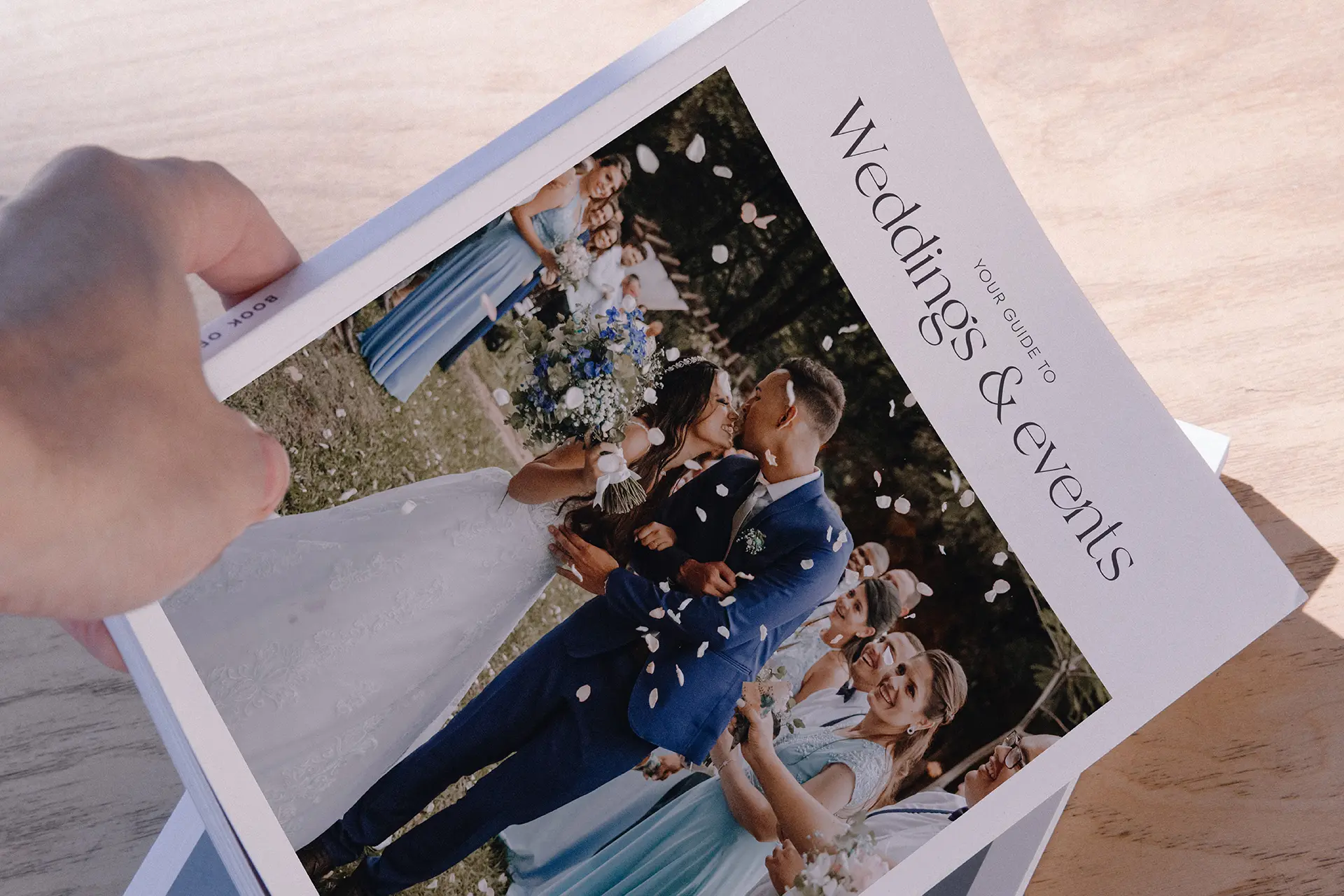A Picture of Happiness
Introduce your venue and its setting and location, along with photographs. Show the areas of the building used for civil and/or religious ceremonies and receptions. Photograph rooms empty, and set up in wedding finery. You may wish to explore both traditional and contemporary styles, or use images from weddings you’ve already hosted: make sure to get permission to use them. Include guest capacity for each area, and potential seating layout options. A floor plan of the venue will help couples understand the flow and size of the spaces available.
If your venue offers in-house catering, tempt the taste buds in the form of menus and food imagery. Be sure to include pictures of the kitchen where these feasts are created. If you host outdoor weddings, explain your bride’s contingency options if it should rain.
Details of indicative costs, and any wedding packages available, including seasonal pricing variations, are also important. Make sure this information is clear and easy to understand: what is included, how much does it cost. While the bill will be finalised at a later date, it is helpful to gauge how much plans will cost, even at this early stage.
Don’t fill your brochure with meaningless text. Use it as a customer-facing resource: it’s an excellent way to provide answers to common questions. The better the quality of information you include, the less time you will need to spend responding to incoming queries. Include email and telephone contact details.
You may also wish to recommend trusted wedding businesses to your bride. Include a vendor directory in your wedding brochure to ensure a seamless and stress-less event. Key terms and conditions are also beneficial, such as noise curfews, confetti, pets, and fireworks. And of course, recent testimonials from happy couples will help settle any pre-wedding nerves.
